 W
WThe overthrow of the Hawaiian Kingdom began on January 17, 1893, with a coup d'état against Queen Liliʻuokalani on the island of Oahu by subjects of the Hawaiian Kingdom, United States citizens, and foreign residents residing in Honolulu. A majority of the insurgents were foreigners. They prevailed upon American minister John L. Stevens to call in the U.S. Marines to protect United States interests, an action that effectively buttressed the rebellion. The revolutionaries established the Republic of Hawaii, but their ultimate goal was the annexation of the islands to the United States, which occurred in 1898.
 W
WThe Hawaiian rebellions and revolutions took place in Hawaii between 1887 and 1895. Until annexation in 1898, Hawaii was an independent sovereign state, recognized by the United States, United Kingdom, France and Germany with exchange of ambassadors. However, there were several challenges to the reigning governments of the Kingdom and Republic of Hawaii during the 8 1⁄2-year (1887–1895) period.
 W
WThe 1892 Session of the Legislature of the Hawaiian Kingdom, also known as the Longest Legislature, was a period from May 28, 1892, to January 14, 1893, in which the legislative assembly of the Hawaiian Kingdom met for its traditional bi-annual session. This unicameral body was composed of the upper House of Nobles and the lower House of Representatives. This would be the first session during the reign of Queen Liliʻuokalani and the last meeting of the legislative assembly during the Hawaiian monarchy. Three days after the prorogation of the assembly, many of the political tension developed during the legislative debates and the queen's attempt to promulgate a new constitution while her legislators were not in session led to the overthrow of the Hawaiian Kingdom on January 17, 1893.
 W
WThe Black Week was a crisis in Honolulu, Hawaii that nearly caused a war between the Provisional Government there and United States.
 W
WThe Blount Report is the popular name given to the part of the 1893 United States House of Representatives Foreign Relations Committee Report regarding the overthrow of the Kingdom of Hawaii. The report was conducted by U.S. Commissioner James H. Blount, appointed by U.S. President Grover Cleveland to investigate the events surrounding the January 1893 overthrow of the Kingdom of Hawaii.
 W
WCastle & Cooke, Inc., is a Los Angeles-based company that was once part of the Big Five companies in territorial Hawaii. The company at one time did most of its business in agriculture including becoming, through mergers the modern Dole Food Company, the world's largest producer of fruits and vegetables. In 1995 it was spun off from Dole and today most of the company's business is in real estate and residential, commercial, and retail development.
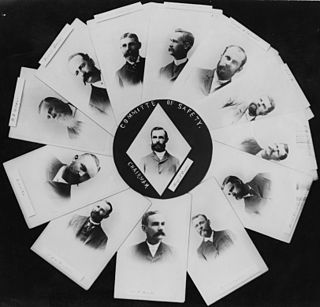 W
WThe Committee of Safety, formally the Citizen's Committee of Public Safety, was a 13-member group of the Annexation Club. The group was composed of mostly Hawaiian subjects of American descent and American citizens who were members of the Missionary Party, as well as some foreign residents in the Kingdom of Hawaiʻi. The group planned and carried out the overthrow of the Kingdom of Hawaiʻi on January 17, 1893. The goal of this group was to achieve annexation of Hawaiʻi by the United States. The new independent Republic of Hawaiʻi government was thwarted in this goal by the administration of President Grover Cleveland, and it was not until 1898 that the United States Congress approved a joint resolution of annexation creating the U.S. Territory of Hawaiʻi.
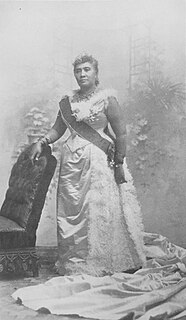 W
WThe proposed 1893 Constitution of the Hawaiian Kingdom would have been a replacement of the Constitution of 1887, primarily based on the Constitution of 1864 put forth by Queen Lili'uokalani. While it never became anything more than a draft, the constitution had a profound impact on Hawaiʻi's history: it set off a chain of events that eventually resulted in the overthrow of the Hawaiian Kingdom.
 W
WThe 1895 Wilcox rebellion was a brief war from January 6 to January 9, 1895, that consisted of three battles on the island of Oʻahu, Republic of Hawaii. It was the last major military operation by royalists who opposed the overthrow of the Kingdom of Hawaii.
 W
WDole Food Company, Inc. is an American agricultural multinational corporation headquartered in Westlake Village, California. The company is the largest producer of fruit and vegetables in the world, operating with 74,300 full-time and seasonal employees who are responsible for over 300 products in 90 countries. Dole markets such food items as bananas, pineapples, grapes, strawberries, salads, and other fresh and frozen fruits and juices. Dole owns a shipping line, Dole Ocean Cargo Express. Dole's chairman founded the Dole Nutrition Institute, a nutritional research and education foundation.
 W
W"Kaulana Nā Pua" is a Hawaiian patriotic song written by Eleanor Kekoaohiwaikalani Wright Prendergast in 1893 for members of the Royal Hawaiian Band who protested the overthrow of Queen Liliʻuokalani and the Hawaiian Kingdom. The song is also known under the title of Mele ʻAi Pōhaku, the Stone-Eating Song, or Mele Aloha ʻĀina, the Patriot's Song. It is still popular in Hawaiʻi today, although it is not clear how many non-Hawaiian speaking listeners are aware of the song's historical significance or the profound antipathy to U.S. annexation in its lyrics.
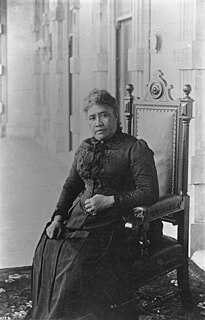 W
WLiliʻuokalani was the first queen regnant and the last sovereign monarch of the Kingdom of Hawaiʻi. The queen ascended to the throne on January 29, 1891, nine days after the death of her brother Kalākaua, and inherited his cabinet ministers. The four cabinet positions were Attorney General, Minister of Finance, Minister of Foreign Affairs and Minister of the Interior. The ministers were ex-officio members of the House of Nobles in the legislature and the Privy Council of State, a larger body of advisors.
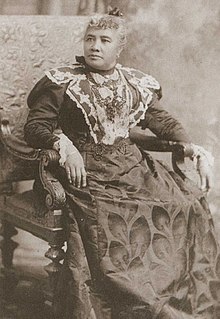 W
WFollowing the January 20, 1891 death of King Kalākaua in San Francisco, his embalmed body arrived at Honolulu Harbor aboard the USS Charleston, draped in black with its ensigns at half mast. His sister Liliʻuokalani was designated his successor.
 W
WThe Morgan Report was an 1894 report concluding an official U.S. Congressional investigation into the events surrounding the overthrow of the Hawaiian Kingdom, including the alleged role of U.S. military troops in the overthrow of Queen Liliʻuokalani. Along with the Blount Report submitted in 1893, it is one of the main source documents compiling the testimony of witnesses and participants in the overthrow of the Hawaiian Kingdom in January 1893. The Morgan Report was the final result of an official U.S. Congressional investigation into the overthrow, conducted by the United States Senate Committee on Foreign Relations, whose chairman was Senator John Tyler Morgan, Democrat of Alabama.
 W
WOpposition to the overthrow of the Hawaiian Kingdom took several forms. Following the overthrow of the monarchy on January 17, 1893, Hawaii's provisional government—under the leadership of Sanford B. Dole—attempted to annex the land to the United States under Republican Benjamin Harrison's administration. But the treaty of annexation came up for approval under the administration of Grover Cleveland, a Democrat, anti-expansionist, and friend of the deposed Queen Liliuokalani of Hawaii. Cleveland retracted the treaty on March 4, 1893, and launched an investigation headed by James Henderson Blount; its report is known as the Blount Report.
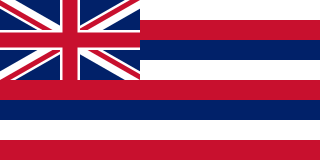 W
WThe Provisional Government of Hawaii, abbreviated "P.G.", was proclaimed after the coup d'état on January 17, 1893, by the 13-member Committee of Safety under the leadership of its chairman Henry E. Cooper and former judge Sanford B. Dole as the designated President of Hawaii. It replaced the Kingdom of Hawaii after the overthrow of Queen Liliʻuokalani as a provisional government until the Republic of Hawaii was established on July 4, 1894.